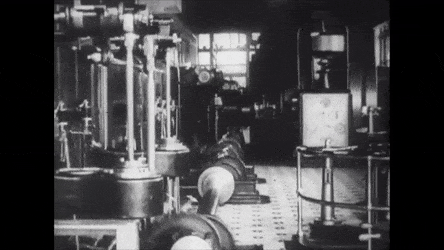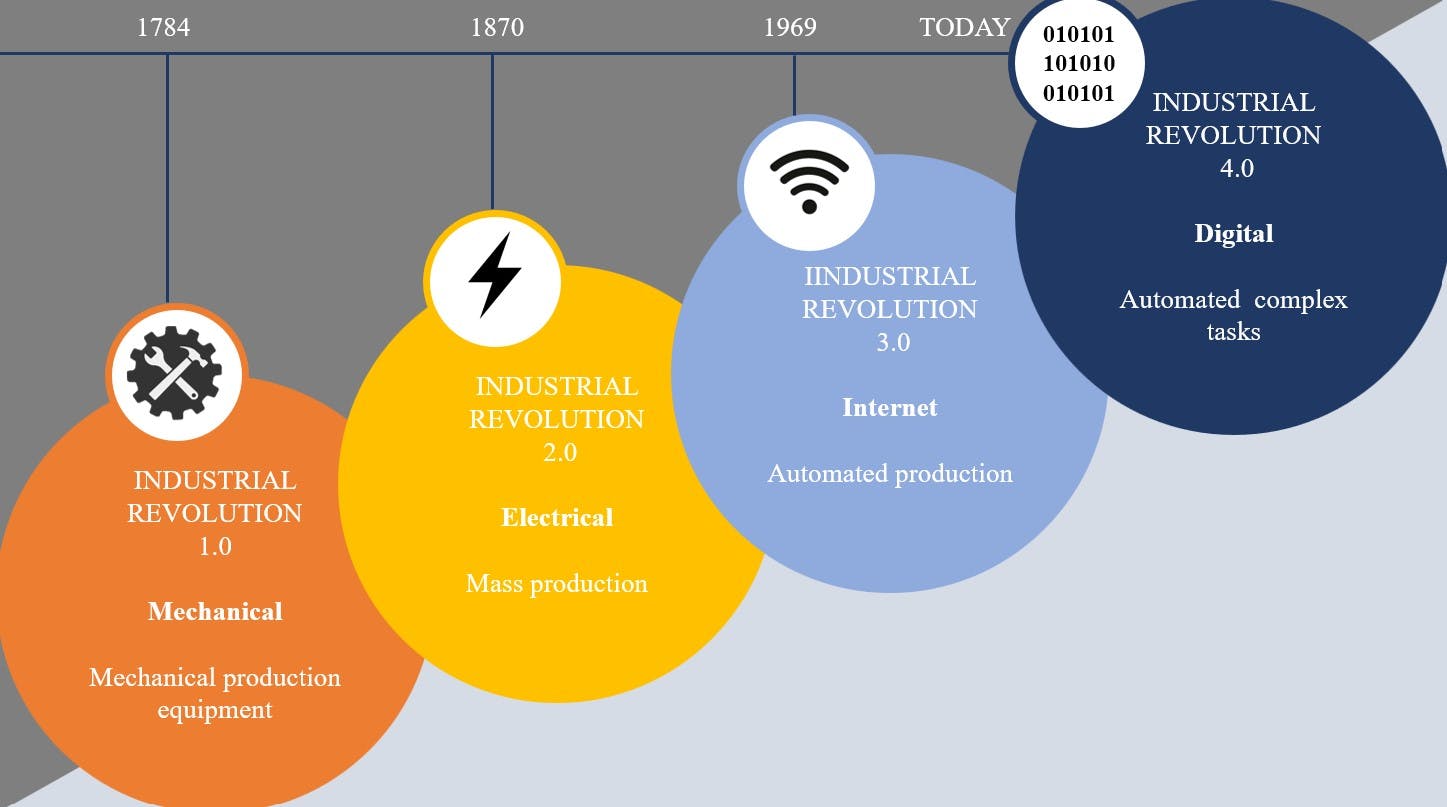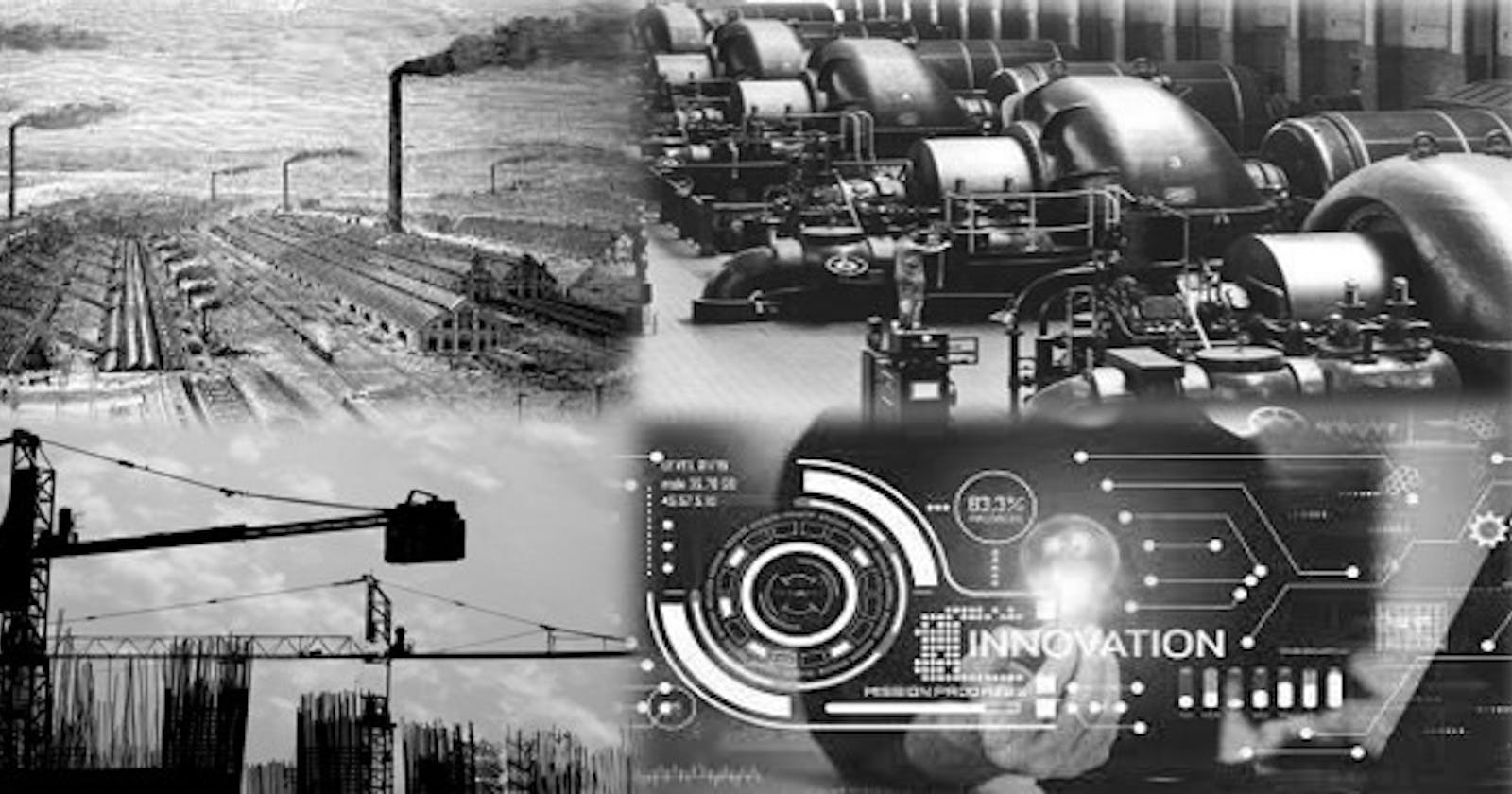The period of Economical, Scientific and Technological development know as industrial revolution.

The above GIF gives an animated view of the industrial revolution.
The industrial revolution took place in the late 18th and early 19th centuries, starting in Britain and spreading to other parts of Europe and North America.
There are four major industrial Revolutions that have occurred through-out history:
Industrial Revolution 1.0
The First Industrial Revolution period saw the development of new manufacturing processes, including the spinning jenny, water frame, and power loom, which allowed for the mass production of textiles. The steam engine was also invented during this time, revolutionizing transportation and powering factories.
Industrial Revolution 2.0
The Second Industrial Revolution period saw the development of new technologies such as the telephone, electric power, and the internal combustion engine, which further revolutionized transportation and manufacturing.
Industrial Revolution 3.0
The Third Industrial Revolution known as the Digital Revolution, this period saw the rise of computers and digital technologies that revolutionized communication, information processing, and automation.
Industrial Revolution 4.0
The Fourth Industrial Revolution period is characterized by the fusion of digital technologies, such as the Internet of things (IoT), artificial intelligence (AI), Machine Learning (ML) and robotics, with physical systems to create new forms of Innovative Product Production.

Industrial revolutions occurred due to a combination of factors, including advances in technology, changes in economic systems, and social and political transformations. Each industrial revolution brought about significant changes in society. These changes enabled the production of goods on a larger scale, at a lower cost, and with greater efficiency, leading to increased productivity and economic growth. While the Industrial Revolution brought about many positive changes, such as increased standards of living and improvements in health and education, they also had negative consequences, including environmental degradation, exploitation of workers, and social inequalities.
